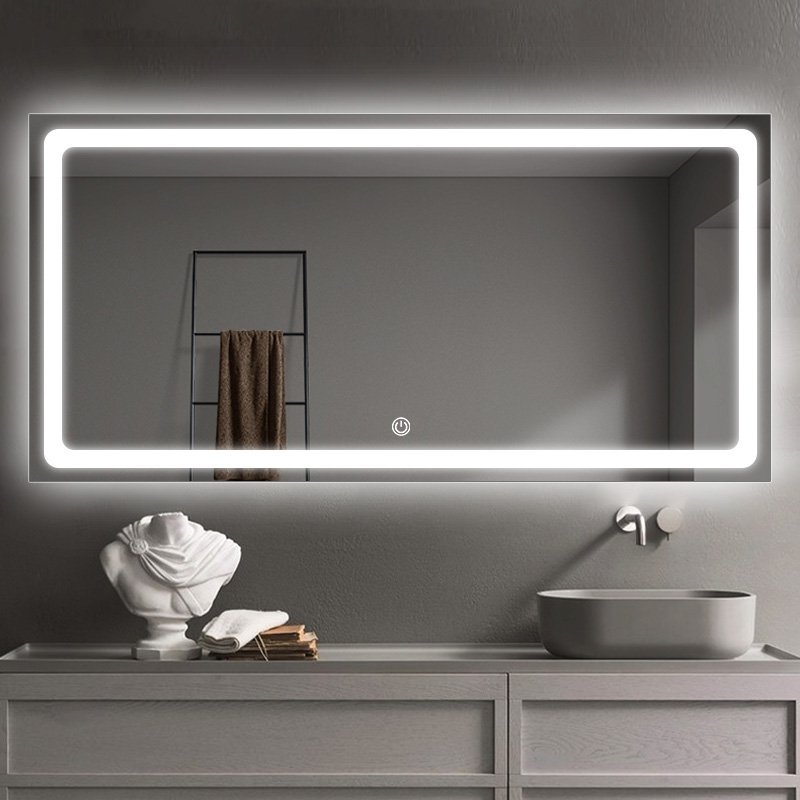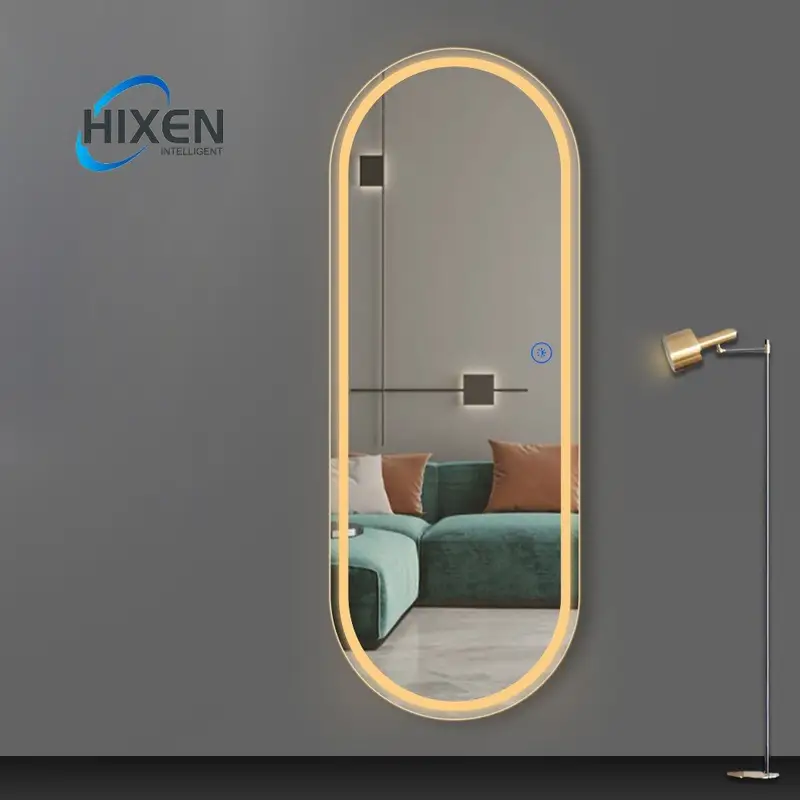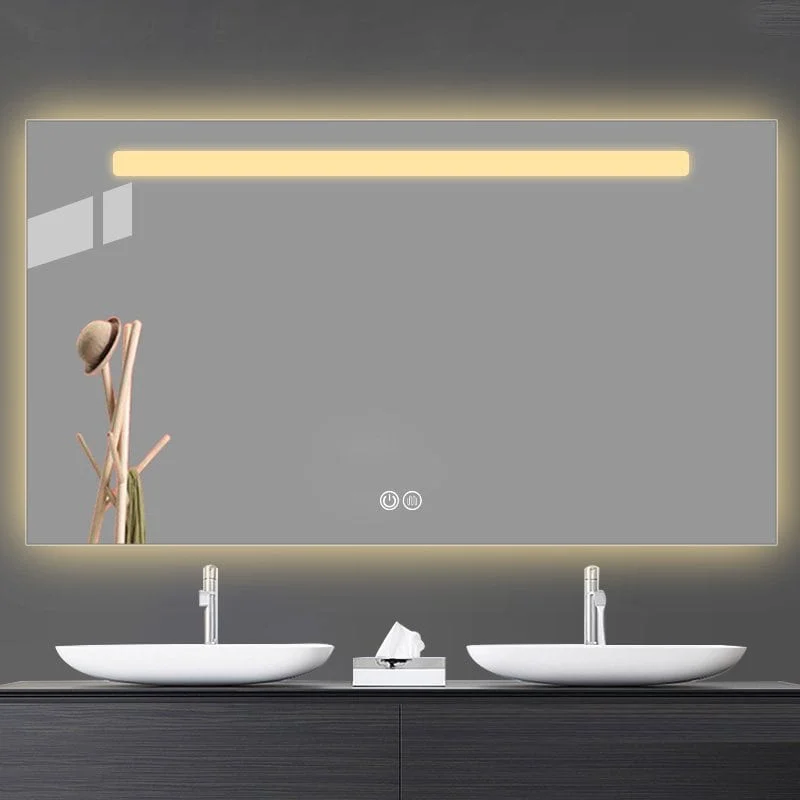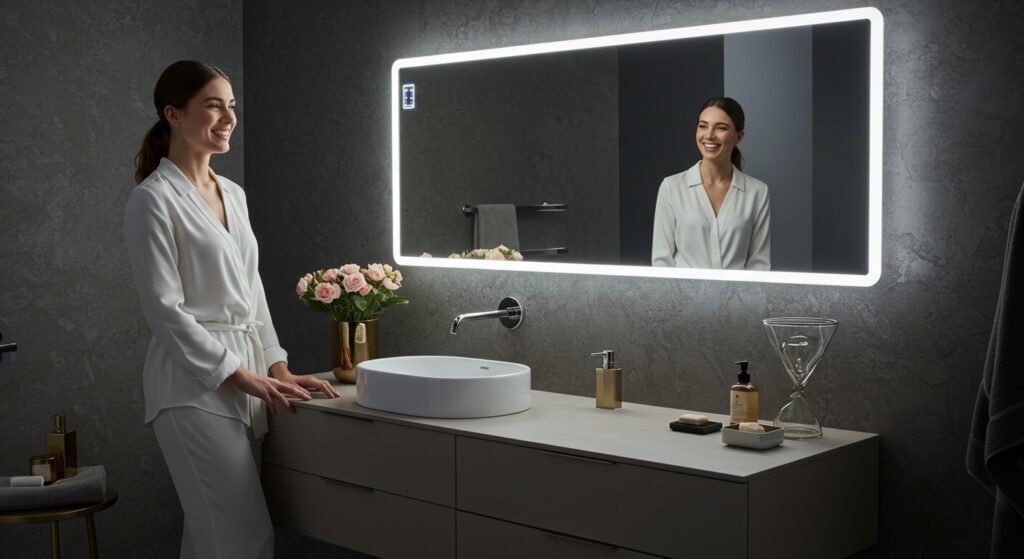|
Conseguir tu Trinidad Audio jugador listo...
|
¿Por qué mi espejo LED no funciona?? Los espejos LED se han convertido en accesorios esenciales en los baños modernos, Combinando la funcionalidad con el diseño contemporáneo. Cuando tu espejo de tocador iluminado deja de funcionar de repente, it disrupts your daily routine and leaves you searching for immediate solutions.
Most LED mirror malfunctions stem from power supply issues, faulty connections, or sensor problems that can be resolved through systematic troubleshooting. Check the power connection first, verify the switch functionality, and inspect the LED driver circuit to identify the root cause of the malfunction.
This comprehensive guide will walk you through professional troubleshooting methods to restore your bathroom mirror functionality quickly and effectively.

What Are the Most Common Power Issues with LED Mirrors?
Power-related problems account for approximately 70% of all LED mirror failures, affecting everything from basic illumination to advanced features like motion sensors and touch controls.
The primary power issues include faulty adapters, conexiones sueltas, voltage fluctuations, and circuit breaker trips that interrupt the electrical supply to your led bathroom mirror.
Power problems in LED mirrors typically manifest through complete failure of illumination, flickering lights, or intermittent operation of smart features. Modern lighted mirrors for bathrooms require stable electrical connections to operate their sophisticated circuitry effectively. When troubleshooting power issues, begin by checking the wall outlet with a multimeter to verify proper voltage delivery.
Inspect the power adapter for physical damage, calentamiento excesivo, or loose connections that could interrupt power flow to your bathroom vanity mirror. Many LED mirrors feature built-in transformers that convert standard household voltage to the lower voltages required by LED components, and these transformers can fail due to power surges or manufacturing defects.
Troubleshooting Common Issues with LED Mirrors
Systematic diagnosis requires understanding the interconnected components that make modern LED mirrors function, from basic illumination to advanced sensor technologies.
Begin troubleshooting by checking power connections, testing switches, inspecting LED components, and evaluating sensor functionality in a logical sequence to identify the specific failure point.
Professional troubleshooting follows a structured approach that eliminates variables systematically. Start with external factors such as power supply and environmental conditions before examining internal components.
Document each step of your diagnostic process to avoid repeating unsuccessful attempts and to provide valuable information if professional repair becomes necessary. When working with lighted vanity mirrors, safety remains paramount throughout the troubleshooting process, requiring proper electrical precautions and understanding of bathroom electrical codes.
| Troubleshooting Priority | Component | Typical Issues | Quick Test Method |
|---|---|---|---|
| 1 | Fuente de alimentación | No power, conexiones sueltas | Check outlet with multimeter |
| 2 | Switches/Sensors | Unresponsive controls | Clean contacts, test response |
| 3 | LED Components | Dim/flickering lights | Visual inspection, voltage test |
| 4 | Alambrado | Intermittent operation | Connection continuity check |
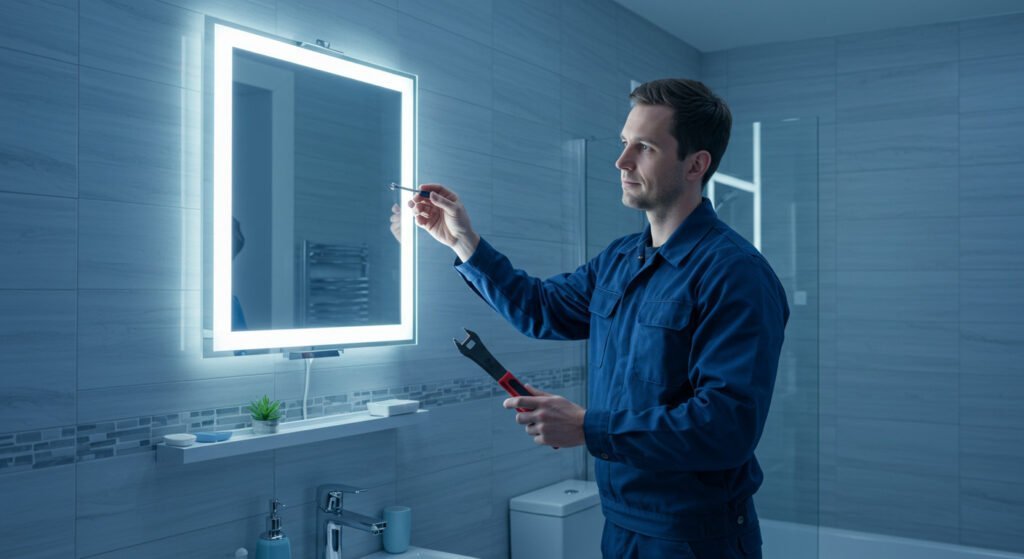
Why Is My Touch Light Up Mirror Not Working?
Touch sensor mirror not working issues typically result from calibration problems, surface contamination, or electrical interference affecting the capacitive sensing technology.
Touch sensors require clean surfaces and proper grounding to function correctly. Clean the sensor area with appropriate cleaners and check for electromagnetic interference from nearby devices.
Touch-activated mirrors utilize capacitive sensing technology that detects changes in electrical fields when your finger approaches the sensor surface. When your led mirror touch sensor not working, the problem often lies in surface contamination that blocks the electrical connection between your finger and the sensor.
Cleaning solutions containing ammonia or alcohol can leave residues that interfere with capacitive sensing, requiring thorough cleaning with distilled water and microfiber cloths. Environmental factors such as high humidity levels common in bathrooms can also affect touch sensor performance by creating a conductive film on the mirror surface that confuses the sensor’s calibration.
Why Is My LED Backlight Not Working?
LED backlight failures typically result from driver circuit problems, individual LED degradation, or thermal management issues affecting the lighting system’s performance.
Test the LED driver output voltage, inspect individual LED segments for damage, and verify proper heat dissipation to identify backlight system failures.
Backlit mirror systems require sophisticated driver circuits that regulate current flow to LED arrays positioned behind the mirror glass. When led mirror light not working in backlight mode, the problem often originates in the constant current driver that maintains stable illumination across all LED segments.
Temperature fluctuations common in bathroom environments can cause thermal expansion and contraction that loosens electrical connections within the backlight assembly. Professional-grade LED mirrors incorporate thermal management systems designed to dissipate heat generated by high-powered LED arrays, and failure of these systems can lead to premature LED degradation and backlight failure.

Can LED Mirrors Be Repaired?
LED mirror repair feasibility depends on the specific failure mode, component availability, and economic considerations compared to replacement costs.
Most LED mirrors can be repaired if the failure involves replaceable components such as power supplies, switches, or LED modules, but complex internal failures may require professional assessment.
Repair economics play a crucial role in determining whether restoration makes financial sense compared to purchasing a new unit. Simple repairs such as replacing power adapters or cleaning touch sensors can extend mirror life significantly at minimal cost. Sin embargo, failures involving integrated LED arrays or sophisticated control circuits may require specialized tools and expertise that exceed typical consumer capabilities. When evaluating repair options for your lighted bathroom mirror, consider factors such as warranty coverage, parts availability, and the potential for recurring problems that might indicate systemic design issues.
| Repair Type | Difficulty Level | Typical Cost | Success Rate | Time Required |
|---|---|---|---|---|
| Power Adapter | Easy | $20-50 | 95% | 30 minutos |
| Touch Sensor | Moderate | $30-80 | 85% | 1-2 horas |
| LED Driver | Difficult | $50-150 | 70% | 2-4 horas |
| LED Array | Expert | $100-300 | 60% | 4-8 horas |
How to Repair LED Light Bathroom Mirror
LED bathroom mirror repair requires systematic diagnosis, proper tools, and safety precautions to address common failure modes effectively.
Begin with basic troubleshooting steps including power verification, connection inspection, and component testing before attempting more complex repair procedures.
Successful repair of led bathroom mirror light with motion sensor not working requires understanding both the electrical and mechanical systems involved. Safety considerations include proper electrical isolation, appropriate personal protective equipment, and compliance with local electrical codes.
Begin repairs by disconnecting power and allowing capacitors to discharge completely before handling internal components. Document the original wiring configuration with photographs to ensure proper reassembly after completing repairs. When working with motion sensor systems, calibration procedures may be required after component replacement to restore proper detection sensitivity and response timing.

How Do I Reset an LED Mirror?
LED mirror reset procedures vary by manufacturer but typically involve power cycling, button combinations, or hidden reset switches that restore factory settings.
Locate the reset mechanism specific to your mirror model, follow the manufacturer’s reset sequence, and allow adequate time for the system to reinitialize completely.
Modern lighted vanity mirrors for bathroom applications incorporate microprocessor-controlled systems that can benefit from periodic resets to clear temporary glitches and restore optimal performance. Soft resets typically involve disconnecting power for thirty seconds to allow internal capacitors to discharge and memory to clear. Hard resets may require specific button sequences or accessing hidden reset switches designed to restore factory calibration settings for touch sensors and motion detection systems. Some advanced mirrors feature diagnostic modes accessible through specific reset procedures that can help identify system problems and guide troubleshooting efforts.
How to Fix LED Light Not Working?
LED light repair requires identifying whether the problem lies in individual LED components, driver circuits, or power supply systems that energize the lighting array.
Test individual LED segments, measure driver output voltages, and inspect connections to isolate the specific failure point within the lighting system.
When your vanity mirror with led lights experiences illumination problems, systematic testing helps identify whether the issue affects individual LEDs, Tiras LED, or the entire lighting system. LED components rarely fail individually except under extreme conditions, making driver circuit problems more likely causes of lighting failures.
Professional repair approaches involve measuring forward voltage across LED segments to identify failed components and testing driver output parameters to verify proper operation. Thermal management problems can cause premature LED failure, making heat sink inspection and thermal paste evaluation important diagnostic steps.

How To Install a LED Bathroom Mirror
Proper installation prevents many common LED mirror problems by ensuring adequate electrical connections, appropriate mounting support, and compliance with bathroom electrical safety requirements.
Install mirrors according to manufacturer specifications, verify electrical connections meet code requirements, and test all functions before completing the installation process.
Installation quality directly impacts long-term reliability of your wall mirror with lights, making proper procedures essential for trouble-free operation. Bathroom electrical installations must comply with local codes regarding GFCI protection, proper grounding, and moisture resistance ratings appropriate for wet locations.
When installing modern bathroom mirror systems, consider factors such as switch placement, sensor positioning, and ventilation requirements that affect both functionality and longevity. Proper installation includes secure mounting that can support the mirror’s weight distribution and accommodate thermal expansion that occurs during normal operation.
Conclusión
Most LED mirror problems can be resolved through systematic troubleshooting and proper maintenance procedures. Regular cleaning, proper electrical connections, and understanding your mirror’s specific features will ensure reliable operation and extended service life for your investment.
- Para aprender a elegir el espejo de baño derecho, haga clic aquí.
- Para aprender a instalar un espejo elija aquí.
- Para aprender a elegir el espejo de tamaño correcto, haga clic aquí.
- Para aprender cómo se hacen los espejos, haga clic aquí.
- Haga clic aquí y aprenderá por qué nos vemos mejor en los espejos.
- Haga clic aquí, aprenderá sobre la parte superior 10 Fabricantes de espejo LED para 2024.
- Haga clic aquí para averiguar por qué no se enciende mi luz de espejo de vanidad?
- Descubra qué tan alto debe ser el espejo del baño? Haga clic aquí
- Haga clic aquí si no sabe cómo limpiar su espejo
- Para saber cómo arreglar el espejo del sensor táctil, no funciona, haga clic aquí
- Descubrir 10 Problemas de espejo de baño LED comunes Haga clic aquí






